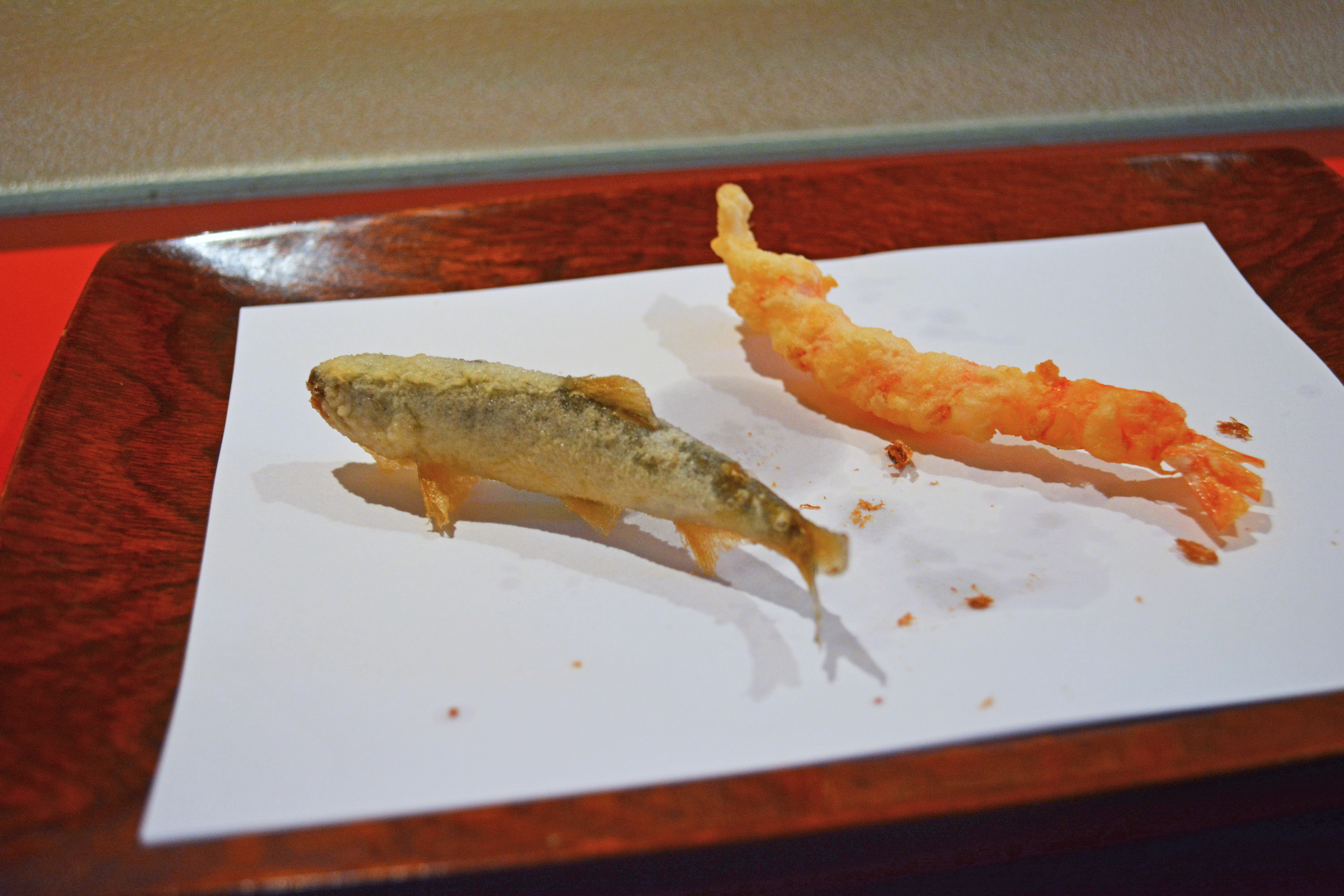The recipe for tempura is widely credited to Portugese and Spanish missionaries who lived in western Japan during the late 16th century. In "Japanese Cooking: A Simple Art," author and chef Shizuo Tsuji, writes that, as this new dish caught on in Japan, it was slowly adapted for local tastes, eventually being paired with a delicately seasoned dipping sauce with grated daikon mixed into it.
If only the missionaries had also introduced another Iberian custom — the siesta — because, after a big lunch of tempura at Shintaro, the best postprandial advice I could offer is to take an hour off and flop down on a park bench (there are several nearby along the bank of the Dojima River).
Shintaro, unlike other tempura restaurants, makes an important and ascetic choice in the way it serve its fried goods: it foregoes that rich daikon-based dipping sauce, presenting you, instead, with a little mound of salt for seasoning. I suspect it's because they don't want any of the flavors diluted or diminished — it's salt or nothing.



